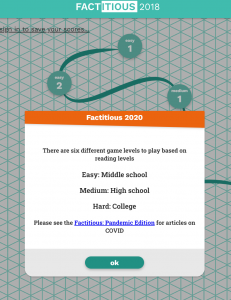
http://www.schooltechnology.org Photos of elementary students using iPads at school to do amazing projects.
When I was in elementary school, the internet was not a thing yet, and so I have grown with the internet as it has grown. Hotmail was the first e-mail I ever dealt with, and as the internet expanded, I learned how to navigate it with relative ease, and developed a knack for research. Most of us quickly found out that Hotmail often threw our important mail into spam, often was hacked and received a lot of junk mail, so I jumped ship and found G-mail. With each stage of internet growth, I also learned new things, and so I like to think of myself as fairly internet capable. I developed blogs, learned code and joined social media sites. HOWEVER… we all have things to learn when it comes to surfing the web…. When we playd the Spot the Troll quiz I actually did get a couple wrong… pride deflated…
The point is.. If I am an experienced and fairly cynical internet user, (meaning I tend to believe almost nothing I read on the web)… then how much harder must it be for our students, who only have a few years practice at decoding the massive amounts of information and social media sites. Sure, our students can type faster then the speed of light, and leap from Snap chat to Tik Tok in a single bound, but do they really have the critical thinking skills to navigate the mass amounts of information they are being bombarded with? If most of us as adults have difficulty, it is hardly surprising young people have trouble deciphering falsehoods from truth.
As teachers, we have a responsibility to learn about internet literacy and pass on those lessons to our students. Fortunately for us, there are some excellent tools on the internet to aid us as we attempt to teach internet literacy to our students. My favorite resource was probably the comic, You’re not going to believe what I’m about to tell you. In fact, I enjoyed it so much that I shared it on Facebook.
One of the literacy practices of the NCTE framework is Consume. These are the concepts the NCTE feels are important for students to know under Consume.
Consume
- Do learners analyze and evaluate the multimedia sources that they consume?
- Do learners examine the credibility and relevancy of sources they consume?
- Do learners consider the author, purpose, and design of information they consume online?
- Do learners review information shared online with a perspective of healthy skepticism?
- Do learners solve real problems and share results with real audiences?
- Do learners search and synthesize online texts to solve inquiry-based (personal and academic) topics?
- Do learners review a variety of sources to evaluate information as they consider bias and perspective in sources? (NCTE framework, 2019 )
You’re not going to believe what I’m about to tell you. begins to address these concepts in a way that is easy for students to understand. If I was to use it while teaching a literacy lesson, I would probably aim for Grade 8 ELA,
We were also provided with a great list of Ted Ed videos.
I also watched each of these.. and felt that they would be great probably starting in about grade five. they also fit under the Consume portion of the NCTE framework. I found the content interesting myself, and even learned a thing or two. These videos encourage critical thinking and media literacy skills, and teach students how to recognize clickbait headlines and misleading articles. They also teach about how misinformation and false news spreads?
If I look at the grade 5 ELA curriculum, I can see that they would fit into lessons into section
CR5.2:
View and evaluate, critically, visual and multimedia texts identifying the persuasive techniques including promises, flattery, and comparisons used to influence or persuade an audience.
a) View and evaluate, critically, visual and multimedia texts identifying the persuasive techniques including promises, flattery, and comparisons used to influence or persuade an audience.
or into grade 8 CR8.4 (mentioned above)
Finally I really enjoyed the
- Break the fake (Quiz)


I am all about students learning through games if that works for them. I know it does for me. I played Factitous for quite a while, had fun and learned. There is a middle school version and a high school version, so the games could be used in ELA 8 (as above) or in any of the higher grades ELA programs.
Grade 10
In English Language Arts 10, students are expected to:
- identify the audiences, purposes, and messages of television and video presentations
- identify the specific language techniques and media conventions in television and video presentations
- respond critically to a television or video presentation
- evaluate critically information obtained from viewing a television presentation
- present thoughts, ideas, and feelings using an appropriate combination of charts, diagrams, pictures, audio tapes, slides, models, drama, and other printed and oral materials
- communicate thoughts, ideas, and feelings for specified purposes and audiences through storyboard, poster, overhead, or telemedia presentations.
This generation (and future ones) are going to need all the skills they can gain to navigate the amount of mis and dis information on the internet. This is a start.
For more information on internet literacy, go Media Smarts
0 Comments